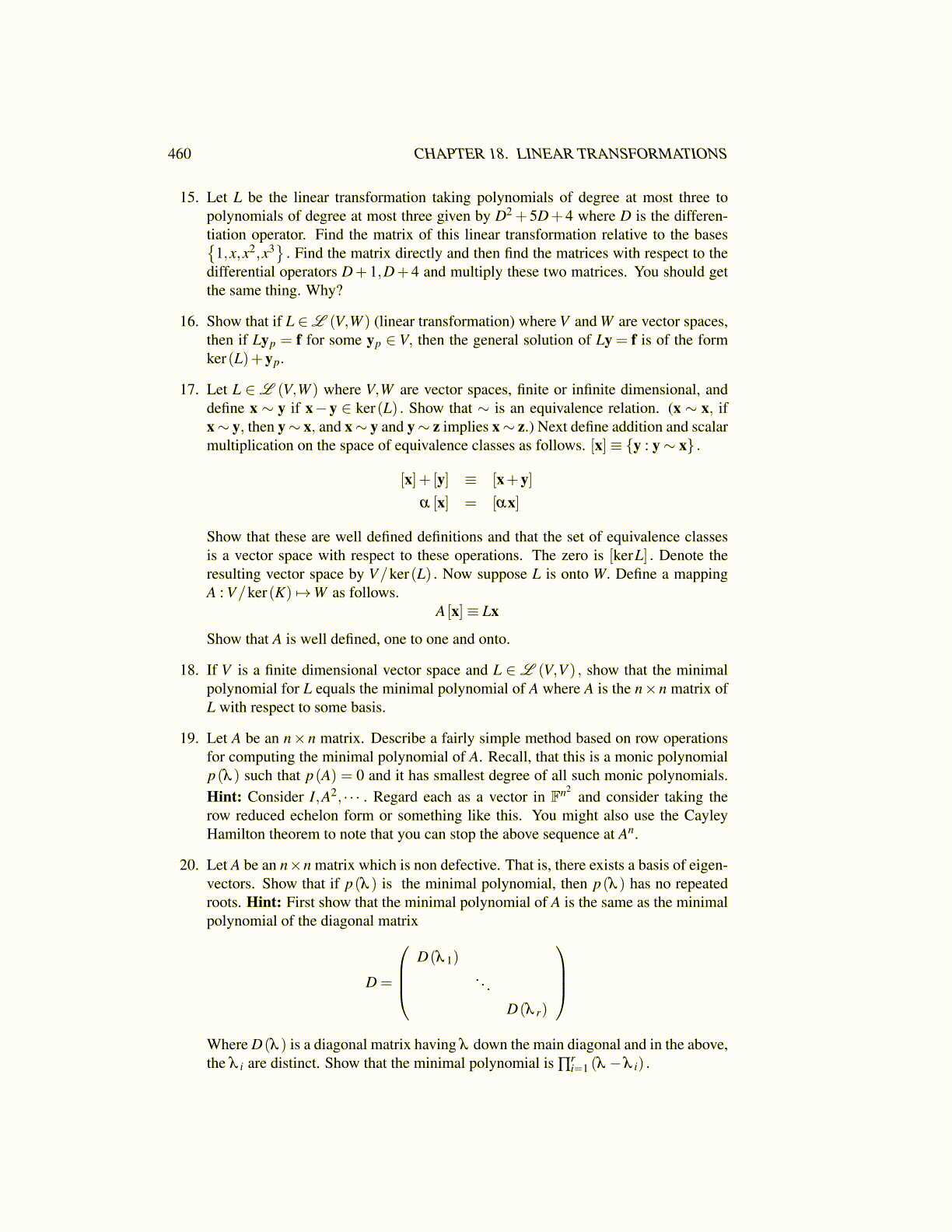
460 CHAPTER 18. LINEAR TRANSFORMATIONS
15. Let L be the linear transformation taking polynomials of degree at most three topolynomials of degree at most three given by D2 + 5D+ 4 where D is the differen-tiation operator. Find the matrix of this linear transformation relative to the bases{
1,x,x2,x3}. Find the matrix directly and then find the matrices with respect to the
differential operators D+ 1,D+ 4 and multiply these two matrices. You should getthe same thing. Why?
16. Show that if L ∈L (V,W ) (linear transformation) where V and W are vector spaces,then if Lyp = f for some yp ∈ V, then the general solution of Ly = f is of the formker(L)+yp.
17. Let L ∈L (V,W ) where V,W are vector spaces, finite or infinite dimensional, anddefine x ∼ y if x−y ∈ ker(L) . Show that ∼ is an equivalence relation. (x ∼ x, ifx∼ y, then y∼ x, and x∼ y and y∼ z implies x∼ z.) Next define addition and scalarmultiplication on the space of equivalence classes as follows. [x]≡ {y : y∼ x} .
[x]+ [y] ≡ [x+y]α [x] = [αx]
Show that these are well defined definitions and that the set of equivalence classesis a vector space with respect to these operations. The zero is [kerL] . Denote theresulting vector space by V/ker(L) . Now suppose L is onto W. Define a mappingA : V/ker(K) 7→W as follows.
A [x]≡ Lx
Show that A is well defined, one to one and onto.
18. If V is a finite dimensional vector space and L ∈ L (V,V ) , show that the minimalpolynomial for L equals the minimal polynomial of A where A is the n×n matrix ofL with respect to some basis.
19. Let A be an n×n matrix. Describe a fairly simple method based on row operationsfor computing the minimal polynomial of A. Recall, that this is a monic polynomialp(λ ) such that p(A) = 0 and it has smallest degree of all such monic polynomials.Hint: Consider I,A2, · · · . Regard each as a vector in Fn2
and consider taking therow reduced echelon form or something like this. You might also use the CayleyHamilton theorem to note that you can stop the above sequence at An.
20. Let A be an n×n matrix which is non defective. That is, there exists a basis of eigen-vectors. Show that if p(λ ) is the minimal polynomial, then p(λ ) has no repeatedroots. Hint: First show that the minimal polynomial of A is the same as the minimalpolynomial of the diagonal matrix
D =
D(λ 1)
. . .
D(λ r)
Where D(λ ) is a diagonal matrix having λ down the main diagonal and in the above,the λ i are distinct. Show that the minimal polynomial is ∏
ri=1 (λ −λ i) .